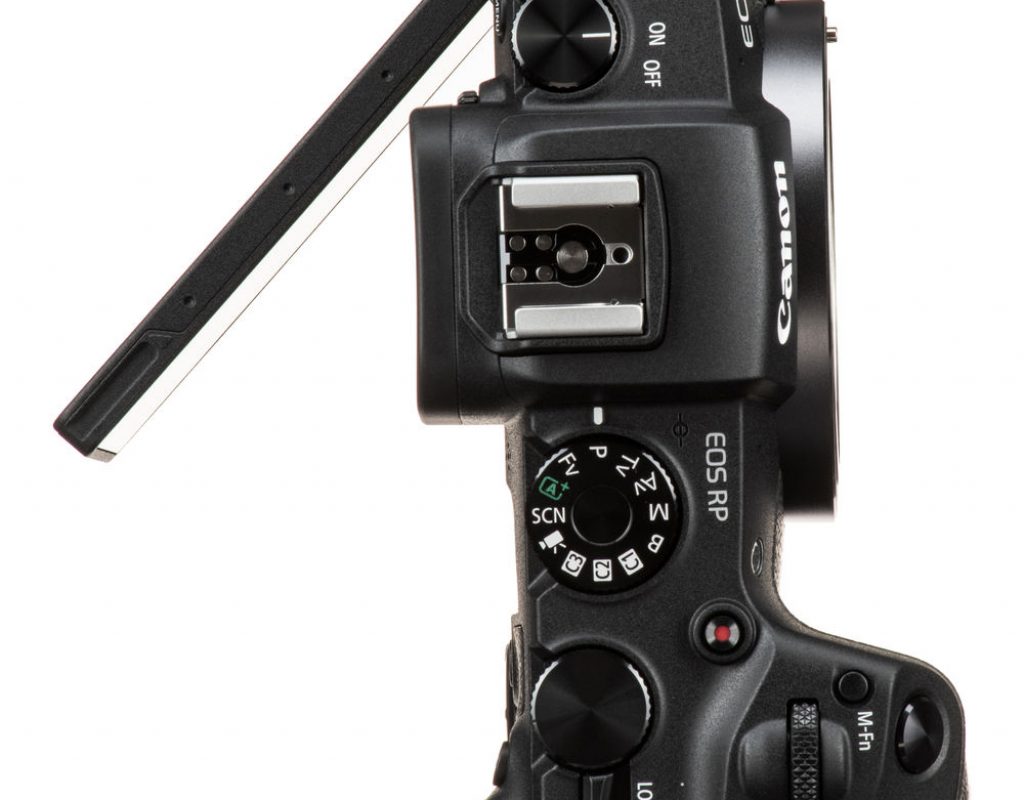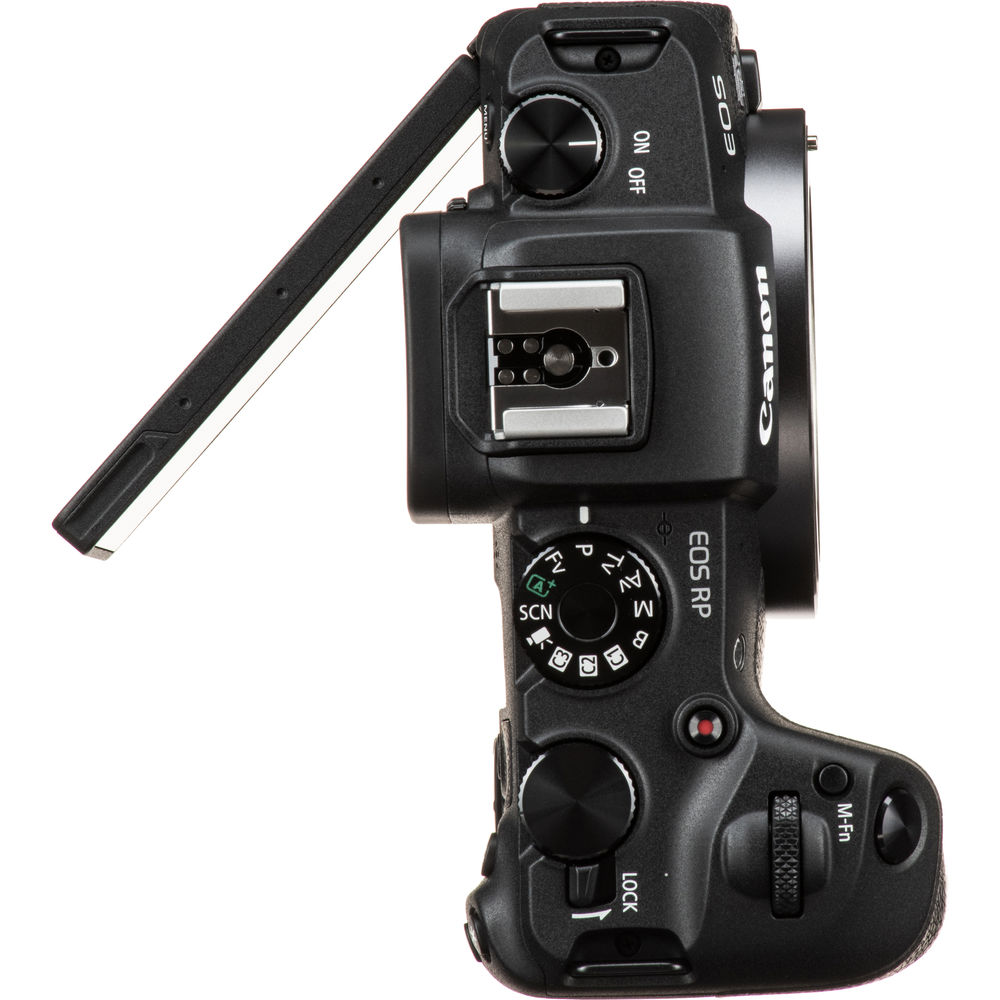
The unusual name of the Canon EOS RP mirrorless hybrid camera reminds me of the English translation of the Commonwealth of Puerto Rico: Rich Port. (The model is indeed EOS RP, even though you can’t immediately see the second letter on the front of the body.) I am quite surprised how few of my video colleagues have even heard about this full-frame camera/camcorder which you can currently get new for only US$999 (body only). I have several things to applaud about it beyond its full-frame sensor, picture quality and impeccable continuous autofocus, and a few details I would improve. Ahead you will learn about both, and how to accomplish those improvements, even if Canon doesn’t.
What to applaud about the Canon EOS RP full-frame camera/camcorder
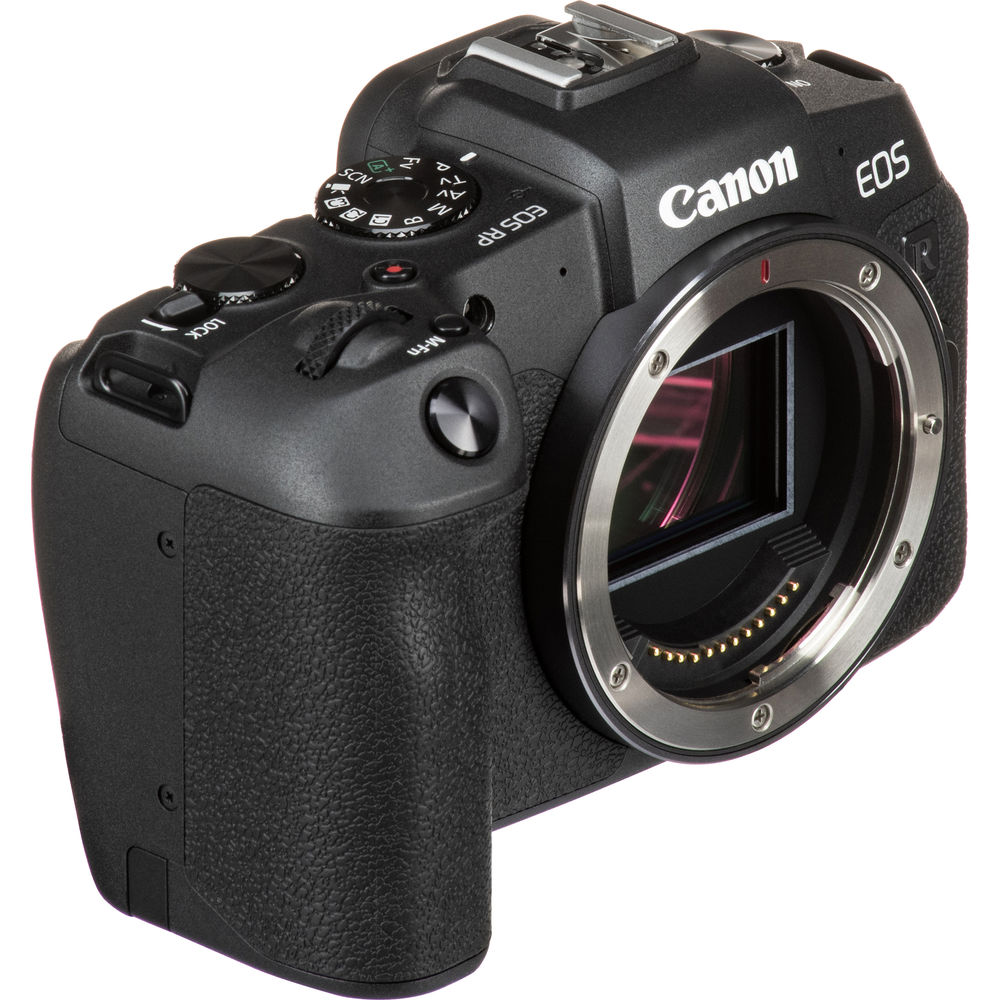
Impeccable Dual Pixel continuous autofocus
…for when you can’t repeat the action, and must get it right the first time, every time.
26.2MP full-frame CMOS sensor
…for better sensitivity in low light and to facilitate reduced depth of field, when desired.
2.36m-dot OLED electronic viewfinder
…to see it easily, even in bright sunlight.
3.0″ 1.04m-dot variable angle touchscreen LCD monitor
…for easier viewing from high and low angles or even for self-video-logging.
RF Lens Mount
The EOS RP features the RF lens mount, which supports Canon’s line of RF-mount lenses. This mount is characterized by its wide 54mm diameter and short 20mm flange-back distance, which promotes the ability to design lenses that are both faster and smaller than their SLR equivalents. The mount also incorporates a 12-pin electronic contact system for more sophisticated autofocus and image stabilization capabilities. This mount design also lends full compatibility to existing EF and EF-S-mount lenses via an optional EF-EOS R Mount Adapter.
Truly worldcam, including ≈23.976p, 25p, ≈29.97p, 50p and ≈59.94p
After a free firmware update, the full-frame Canon EOS RP which you can currently get new for US$999 (Amazon — B&H) is now truly worldcam, including:
- ≈23.976p (aka “23.98p”) at 4K UHD and HD 1080p (both 16:9 aspect ratio)
- 25p at 4K UHD, HD 1080p and HD 720p (all 16:9 aspect ratio)
- ≈29.97p at HD 1080p and HD 720p (both 16:9 aspect ratio)
- 50p at HD 1080p and 720p (both 16:9 aspect ratio)
- ≈59.94p at 1080p and 720p (both 16:9 aspect ratio)
As I have covered in many articles with the word worldcam, this is important in order to accept all possible contracts even for clients in another region, where a different set of framerates fit in the local broadcast television system.
Has both a microphone input and a headphone output
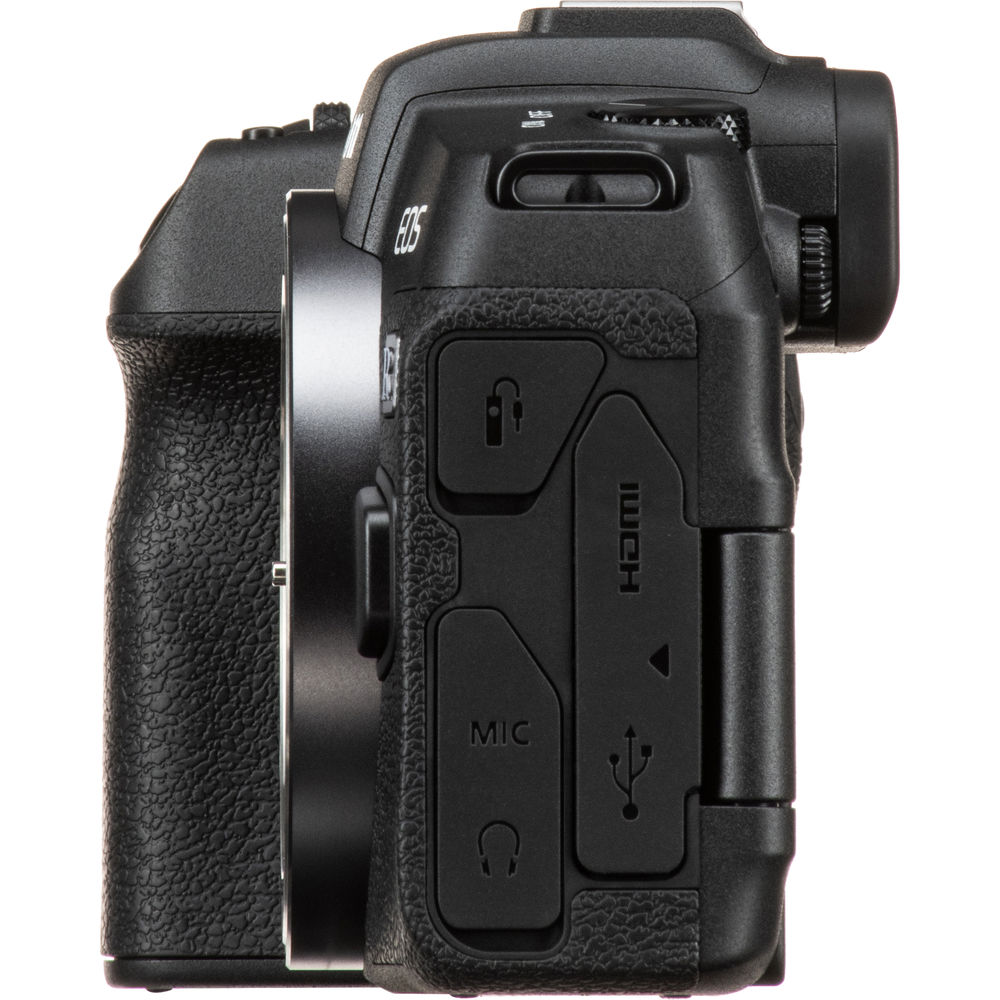
Both are TRS 3.5mm, but at at least they exist and can be used.
”My Menu” and Custom shooting mode (C1-C3)
Even though some of the EOS RP’s menus are cumbersome and poorly arranged, this fact can fortunately be compensated by the My Menu(which allows you to create your own menu of your favorite things you need to change often) and the three custom shooting modes (C1-C3).
Fortunately displays non-integer framerates in menus
Unlike some other camera manufacturers which cruelly round non-integer framerates in many their camera menus, which confuses many users and even other manufacturers who are new to video (those guilty manufacturers include JVC and Sony in most cameras under US$5000), both Canon and Panasonic have atoned from that sin in recent years, and the Canon EOS RP is no exception. So it displays ≈59.94 as “59.94”, ≈29.97 as “29.97” and ≈23.976 as “23.98”. More about that last one ahead.
Clarification about the ≈23.976p addition to the EOS RP via a free firmware update
Sadly, many reviewers used the term “24p” in their headline and continued to call it “24p” throughout their article or video. Canon fortunately added ≈23.976 HD 1080p after already having it at the pre-existing at 4K UHD (both 16:9 aspect ratio). Canon has not (yet) added exact 24.000p, just as has not (yet added) 4K DCI (4096×2160, 256∶135 or ≈1.90∶1 aspect ratio) resolution to the EOS RP camcorder.
As I have been clarifying for many years, the exact 24.000 framerate is not the same as the television-friendly (since 1953 for NTSC and ex-NTSC regions) ≈23.976 framerate. These two framerates are indistinguishable from an esthetic perspective, but drastically different from a distribution perspective. Digital theaters which follow the DCI do not accept ≈23.976 so if you are using a camera that shoots ≈23.976 but not exact 24.000, you must retime the footage and then use it on a timeline set for exact 24.000 for DCI distribution.
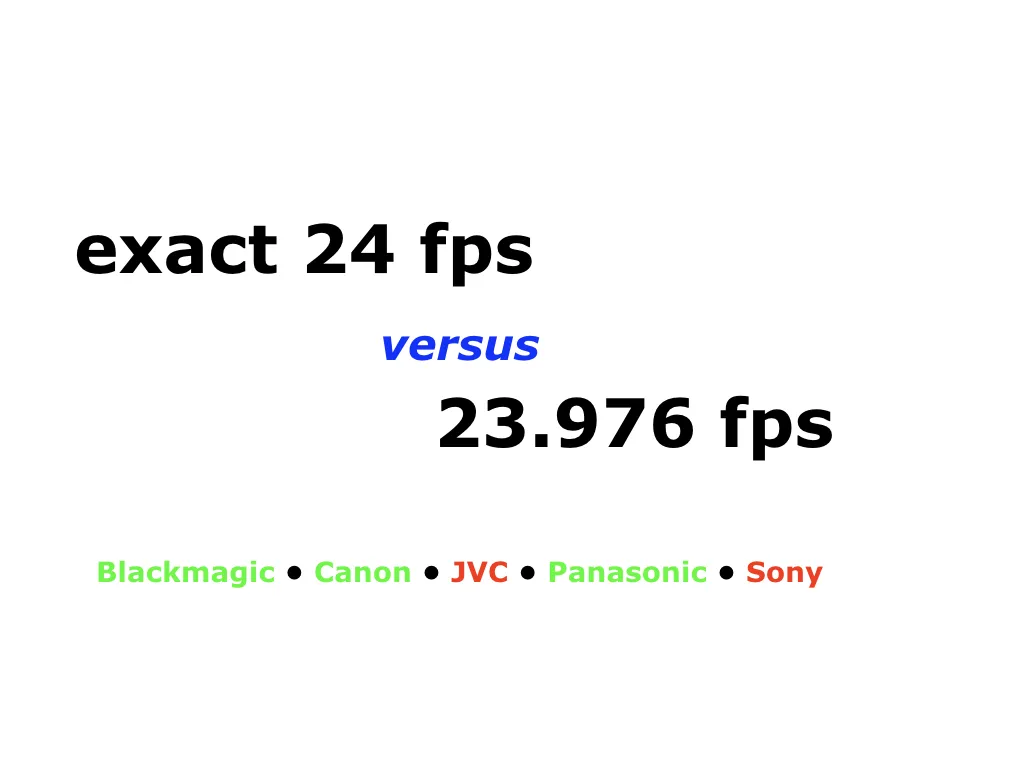
More about this topic in my 2017 article When exact 24 fps beats 23.976… and when it doesn’t (illustrated above) and also Is your camera WorldCam & CineCam too?.
If your distribution requires mainly traditional television, web, tablets and smartphones, then the only issue for you to understand is that if you are not distributing for DCI film theaters and your camera doesn’t offer exact 24.000p, your 24-ish framerate for shooting and editing should be ≈23.976 (aka “23.98”).
What I would like improved in the Canon EOS RP via a future firmware update

Image credit: Adam Wilt
- Video waveform and/or false color. Of course, you can use an external HDMI monitor or Adam Wilt’s ≈US$20 FieldMonitor for iOS for your iPad, iPod Touch or iPhone (shown above) to add this feature. At least Panasonic’s GH5 and GH5s offer video waveform.
- Shutter angle so the operator won’t have to change the shutter speed manually while changing framerates, i.e. to achieve 180-degree shutter by setting it at 1/48 (or 1/50 if 1/48 is unavailable) at ≈23.976p, 1/50 at 25p or 1/60 at ≈29.97p. At least Panasonic’s GH5 and GH5s offer the shutter angle option.
- C-LOG, Canon’s profile offered only in more expensive Canon camcorders. Thanks to Andrew Reid, you can add this profile (and much more) to your Canon EOS RP for ≈US$26. See ahead.
Andrew Reid’s ≈US$26 EOSHD C-LOG and Film Profiles Pack
For about US$26, you can get the following ten profiles added to your Canon EOS RP (or other Canon camera):
- EOSHD C-LOG (Custom LOG). “C-LOG (Custom LOG) greatly extends dynamic range in the shadows to match that of Canon LOG as closely as possible. This means you can expose for the highlights and maximise the dynamic range of your videos.”
- EOSHD Scarlett (silver blacks and a soft film-like texture but vivid, rich colour)
- EOSHD Chrome (moody desaturated cinema look for drama, horror, sci-fi)
- EOSHD Mono-Adams (high contrast black and white, adding drama to landscape and cityscape scenes)
- EOSHD Monochrome (low contrast black and white, for portraits and a classic 1960’s Italian cinema style)
- EOSHD Vivid SkinTone (alive colour, electricity to image, overall vitality to skin)
- EOSHD Cinema 1 (highest contrast and saturation)
- EOSHD Cinema 2 (raised black level but maintains high contrast)
- EOSHD Cinema 3 (normal saturation and contrast)
- EOSHD Cinema 4 (a more muted and less stylised film look for all-round cinema)
For more information, see Andrew Reid’s article here.
Conclusions and purchase links
I am intrigued by all that can be achieved by the Canon EOS RP full-frame camera. If interested, get it while you still can for US$999 (Amazon — B&H).
NOTE: Many online posts complain about the “lack” of ≈23.976p on this camera in 1080p. Those were published before the free firmware update (which changed everything), or people who read about those prior posts and simply echoed the outdated information. Indeed, the Canon EOS RP has ≈23.976p (aka “23.98”)) even in HD 1080p after the latest free firmware update.
(Re-)Subscribe for upcoming articles, reviews, radio shows, books and seminars/webinars
Stand by for upcoming articles, reviews, books and courses. Sign up to my free mailing list by clicking here. If you previously subscribed to my bulletins and no longer receive them, you must re-subscribe due to new compliance to GDPR. Most of my current books are at books.AllanTepper.com, and my personal website is AllanTepper.com. Also visit radio.AllanTepper.com.
Si deseas suscribirte (o volver a suscribirte) a mi lista en castellano, visita aquí. Si prefieres, puedes suscribirte a ambas listas (castellano e inglés).
Suscribe to his BeyondPodcasting show at BeyondPodasting.com.
Subscribe to his To boldly split infinitives show at Toboldlysplitinfinitives.com.
Subscribe to his award-winning CapicúaFM show at CapicúaFM.com.
Save US$20 on Google Fi, my favorite mobile telephony and data service
One of my favorite service for broadcasting live via is Google Fi. Click here to save US$20 on Google Fi, which now works on iPhone and Android. With Google Fi (covered previously in several articles), there is no extra charge for data-only SIM cards on the same account, for up to 10 devices. You only pay for the total data, and data is free after 6 GB per month. So you could be using one Google FI SIM card on your primary phone, another in a tablet or secondary phone (or third, of fourth…).
FTC disclosure
No manufacturer is specifically paying Allan Tépper or TecnoTur LLC to write this article or the mentioned books. Some of the other manufacturers listed above have contracted Tépper and/or TecnoTur LLC to carry out consulting and/or translations/localizations/transcreations. Many of the manufacturers listed above have sent Allan Tépper review units. So far, none of the manufacturers listed above is/are sponsors of the TecnoTur , BeyondPodcasting CapicúaFM or TuRadioGlobal programs, although they are welcome to do so, and some are, may be (or may have been) sponsors of ProVideo Coalition magazine. Some links to third parties listed in this article and/or on this web page may indirectly benefit TecnoTur LLC via affiliate programs. Allan Tépper’s opinions are his own. Allan Tépper is not liable for misuse or misunderstanding of information he shares.
Copyright and use of this article
The articles contained in the TecnoTur channel in ProVideo Coalitionmagazine are copyright Allan Tépper/TecnoTur LLC, except where otherwise attributed. Unauthorized use is prohibited without prior approval, except for short quotes which link back to this page, which are encouraged!

Filmtools
Filmmakers go-to destination for pre-production, production & post production equipment!
Shop Now